Blog
Blog
Interested in learning more about fire protection solutions, safety systems or security technology? We’ll keep you posted with answers to your most frequently asked questions, updates on new technology, and company news you might be interested in.
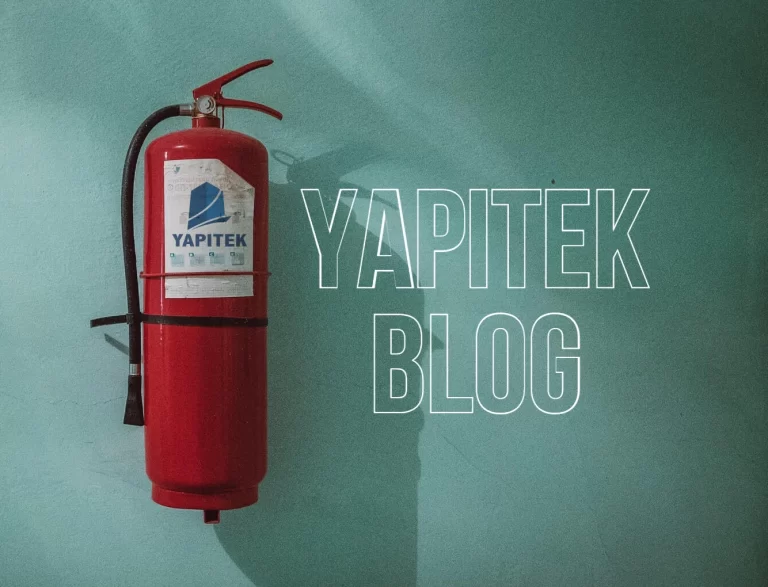
What is fire?
Fire is one of the scariest things that can happen to us. In most countries, fire safety regulations are paramount. Our country is no exception in this regard, and the law obliges legal entities to strictly comply with fire safety requirements. It can completely destroy buildings and other property.
Fire safety
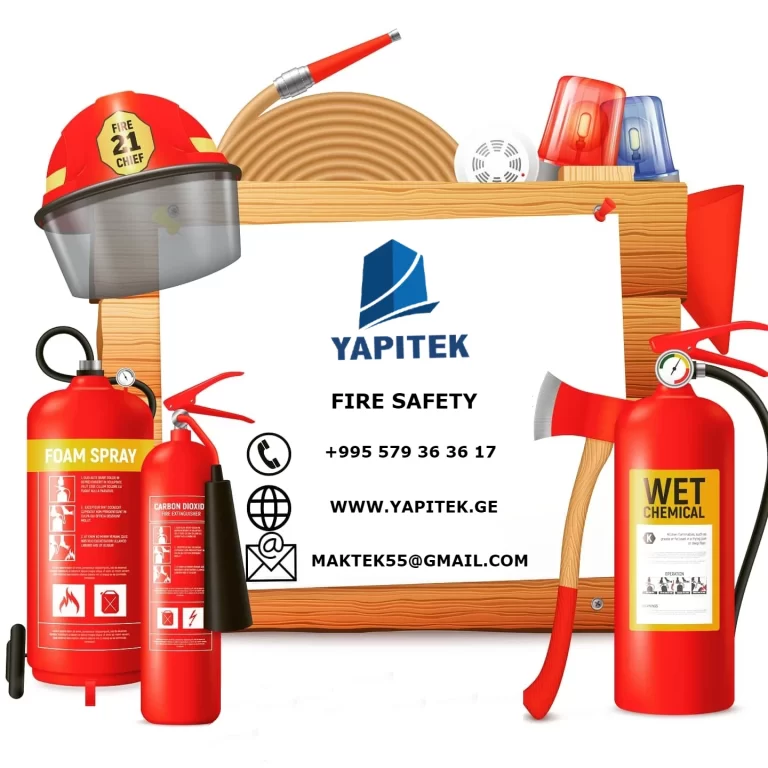
Safety norms
safety, evacuation plan and awareness in case of fire evacuation are necessary and small fire safety rules that the whole community needs to know or not, staff working in public places to be able to protect themselves instead of the expected panic in the event of a fire Safety of other citizens... If we look at the recent fires in buildings, we are faced with the same problem everywhere - a disorganized fire suppression system, ignorance of rules and ignorance.
- Hotels with more than 100 rooms;
- Shopping centers / hypermarkets;
- Buildings over 28 meters high;
- Club and entertainment centers with an area of over 300 m2;
- Educational institutions with a capacity of over 200 students;
- Sports facilities for over 400 spectators;
- Gas stations;
- Airports / Metro stations / Train stations;
- Oil depots;
- Warehouses for products, products and raw materials with an area of 1000 m2;
- Cultural heritage sites;
- Hospitals with 50 beds;
- Government buildings;
- Various types of factories;
- Fire and explosive items.
Fire Sprinkler System
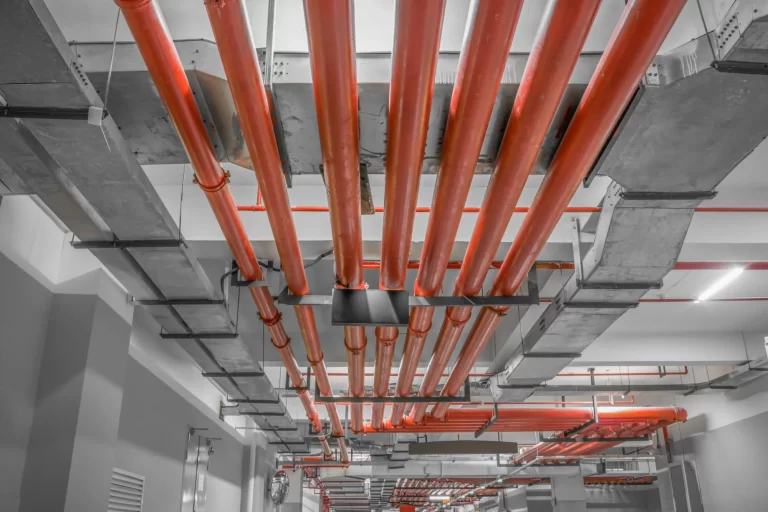
All commercial buildings require fire protection — and in most cases, fire sprinkler systems are the solution that works to protect both your property and your people. If your facility has a fire sprinkler system, you may be aware that there are some situations that require it to be drained. Below, we’ll discuss when a fire sprinkler system needs to be drained, how to drain it, and what that process looks like for various types of systems.
When Does A Fire Sprinkler System Need to Be Drained?
- Fire sprinkler system inspection, repairs, and maintenance
- sprinkler system testing
- Restoring an activated dry-pipe system
- Extending an existing system
- Changing to accommodate new fire protection laws and regulations
Improper draining can lead to sprinkler components being damaged. Therefore, it’s important to know each step of the process in order to make sure your fire sprinkler system is drained safely and effectively. For the best results, adhere to the following steps:
Before anything else, you should notify various parties of your plan to drain, how long it’s expected to take, and what precautionary measures you’re taking while your fire sprinkler system’s service is restored. Some important groups to notify include:
- insurance agent
- local fire department
- facility’s emergency response team
- employees
Fire Extinguisher
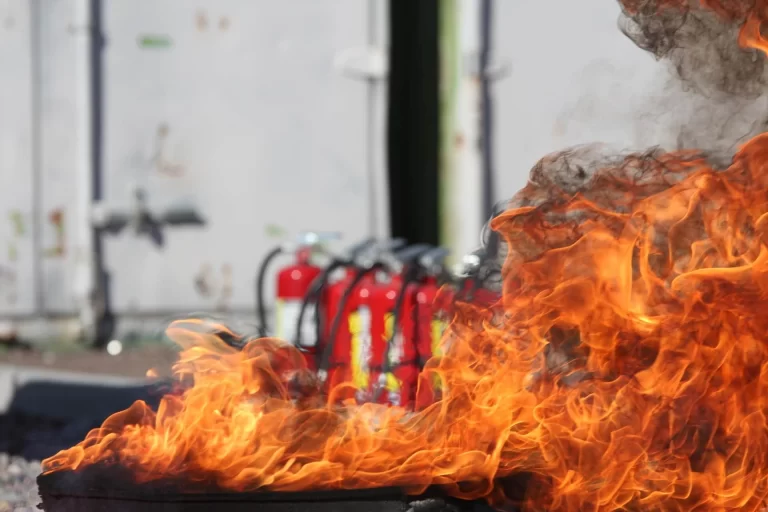
FIRE EXTINGUISHER CAN BE A LIFESAVER. PLACED NEAR AN EXIT, IN AN EASY TO GRAB SPOT, IT CAN PUT OUT A SMALL FIRE BEFORE THE FIREFIGHTERS ARRIVE, OR AT LEAST SUPPRESS THE FLAMES. ALL EXTINGUISHERS ARE CLASSIFIED A, B, C (OR A COMBINATION OF THESE)
Classes of Fires and Ratings
- A is ordinary combustibles like wood, paper, and cloth
- B is flammable liquids, such as gasoline or cooking oil
- C is live electricity.
Instructions for using the fire extinguisher
Fire safety experts advise you to learn how to use an extinguisher before an emergency arises. Check with your fire department to see if they offer homeowner training. Keep extinguishers where you can see and reach them easily, near the room's exit. That way, you can fight the fire with your back to the door and make a quick escape if flames get out of control.
To help you remember how to use an extinguisher, use the acronym PASS:
- Remove the seal and remove the protection.
- Aim the chemical at the source of the flames rather than at the flames themselves, standing at least 6 feet from the fire. (or as directed on the extinguisher's label)
- Click on the check and hold it tight
- Sweep the source of the flames until the extinguisher runs dry
Whenever you have used an extinguisher, whether it is completely empty, you must replace it or refill it right away. The same goes with any extinguisher whose pressure gauge slips out of the green zone into red over time. Fire extinguisher companies charge about $15 to refill a typical 5-pound A:B:C extinguisher, provided it has a metal valve. Extinguishers with plastic valves are not refillable and should be discarded after use.
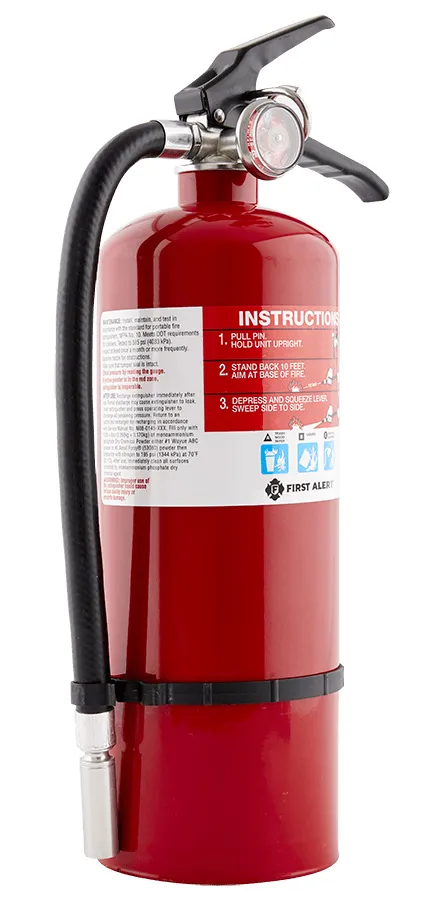
Fire Alarm System Basics
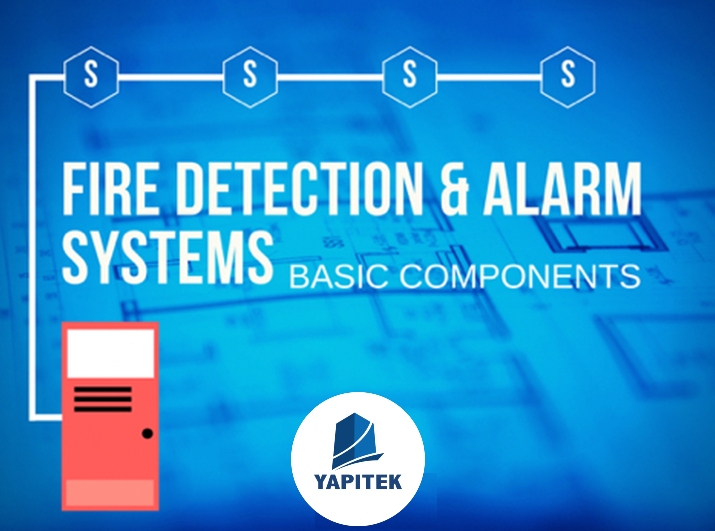
Let’s go back to fire alarm basics. Every commercial building has a fire alarm, but not many of us know exactly what it does or how it works. A fire alarm system is your first line of defense against the danger of fire. Before you can react to the fire, you must first know it is there. But, your fire alarm system does more than just announce a fire. There are actually four main ways your fire alarm works to keep you and your building safe.
Classes of Fires and Ratings
The four ways your fire alarm system works to protect your property and its occupants from the dangers of fire are by detecting fire, alerting occupants, managing risk, and notifying the fire department.
Fire system is designed to detect fire in two main ways: smoke and heat. It should also have the capability of a manual pull, in case a fire is observed before smoke or heat reaches the sensors of the system. Other systems are activated when movement in the sprinkler system is detected, indicating that the sprinklers are responding to a fire.
When the fire alarm system detects smoke, heat, or water movement, it alerts occupants of the building using both audible and visible alarms. These alarms will be bright, loud, obnoxious, and impossible to ignore, which help mobilize individuals to follow your evacuation plan. Using both types of alarms ensures that every person in the building is alerted.
Building’s fire alarm system works in a third way to protect you: by reacting to potential risks using control measures. When the alarm is activated, some systems perform a set of tasks that help prevent fire and smoke from spreading as well as protect occupants, such as: automatically shutting doors in different zones, powering off ventilation and air conditioning, or redirecting elevators to bring cars to a designated level.
The fourth purpose of your fire alarm system is to notify authorities. This ensures the fire department is en route as quickly as possible, so they can respond and extinguish the fire before it becomes an even bigger threat.
Evacuation plan
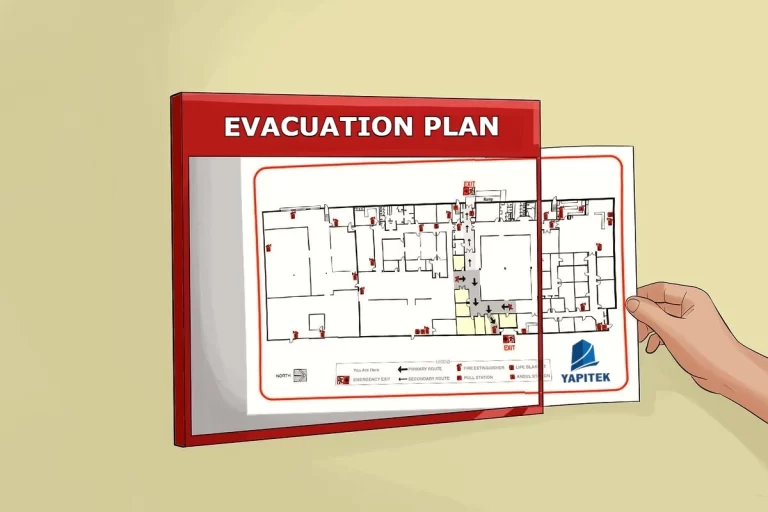
According to the technical regulations on fire safety rules and conditions, in public facilities and workplaces with 10 or more people on the floor, as well as in buildings where people with disabilities are permanently present, evacuation exits must be posted on all floors. Is strictly defined.
Facility managers should ensure that personnel are trained in the event of a fire at least once every six months, in parallel with checking the proper operation of all elements of the building fire protection system.
Sample graphic image of evacuation plan
According to the regulations, instructions for personnel actions to ensure evacuation in case of fire should be developed. Instructions for personnel actions to ensure evacuation in case of fire are developed in the form of a table, which lists the actions of personnel in case of fire, their sequence, executors. The instruction also mentions the rule of notifying people about fires in the building, the rule of registration of evacuees.
